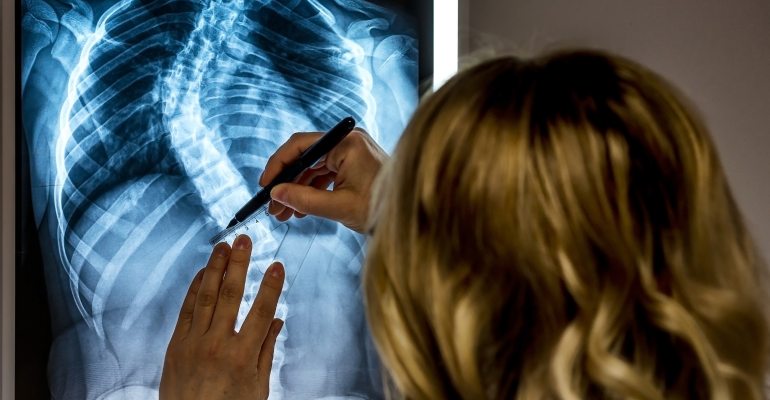The increasing prevalence of scoliosis, which currently affects two to three per cent of the global population, indicates that there may be substantial growth for the scoliosis management market in the coming years. According to a report by Future Market Insights, the value of the market is projected to reach a value of US$4.5 million by 2032, with North America leading the market for treatment options, followed by Europe and Asia Pacific.
Early detection and treatment of scoliosis
Scoliosis affects approximately one in 300 children and involves a sideways curvature of the spine that could potentially result in back pain and breathing difficulties in adulthood. Dr. A. Noelle Larson, Paediatric Orthopaedic surgeon at Mayo Clinic emphasised that early detection and treatment with the aid of braces can help manage childhood scoliosis efficiently.
“Bracing is very successful for the treatment of moderate curves. There is very good evidence that brace wear can halt curve progression in growing children,” Dr. Larson explained.
While bracing helps maintain the spine in a correct position by halting the progression of scoliosis and preventing the need for surgery, physical therapy plays a significant role in pain management and improving posture, giving essential support to young patients.
Related: How technology is shaping the future of surgery
According to Dr. Larson, moderate to severe scoliosis can be managed by motion-sparing surgical options that prioritise preserving spinal flexibility and growth. These innovative approaches offer hope to patients and families navigating the challenges associated with more advanced cases.
Tech and innovation
ICT technology and smartphone devices have brought significant advancements to scoliosis management. ICT-based scoliosis management involves standalone software tools, web-based applications, and smartphone apps. Semi-automatic procedures using computer mouse-placed landmarks have further demonstrated reliability and reduced variation. Computerised software tool has enhanced the visualisation and consistency of digitalised X-ray images, while AI applications, such as deep neural networks, can predict vertebral slopes and automatically calculate Cobb angle.
Smartphones, on the other hand, offer a convenient tool for measuring the Cobb angle, particularly in areas with limited access to digital tools. Smartphone apps enable doctors and spinal surgeons to calculate and measure spinal curvature angles, facilitating screening and monitoring of scoliosis. These apps also allow data comparison, continuous tracking, remote consultation, and potential contributions to scientific research and treatment formulation. Overall, smartphone apps enhance screening accuracy and have the potential to detect scoliosis globally.
Surgical treatment options for moderate to severe scoliosis
The traditional approach for severe scoliosis is a spinal fusion surgery where two rods and 12 to 20 screws are placed in the spine to hold it in a corrected position. “This is a very successful surgery that corrects scoliosis, but it eliminates motion and growth over the part of the spine that is curved,” Dr. Larson explained.
“Patients who have a fusion into the lower back may feel less flexible and may even be at risk for arthritis in the remaining part of the spine that is not fused. Also, some patients who do high-demand sports such as gymnastics or diving may find it difficult to do some activities following a long fusion,” she added.
There are several motion-preserving scoliosis surgeries currently available. Posterior dynamic distraction (Apofix) involves three screws and a rod with several small joints that allow for motion. It works for patients with a single flexible curve pattern. Vertebral body tethering is a plastic cord that is placed along with screws in the front of the spine. It can be used in growing children and functions as an internal brace to guide the spine into a corrected position.
Related: Robotics in spine surgery can elevate accuracy
Compared to fusion surgery, both approaches have a higher chance of reoperation and less correction of the curve. However, children treated with vertebral body tethering typically notice no difference in their spinal motion or function and patients with posterior dynamic distraction find some preserved motion.
Scoliosis is a challenging condition because in many instances families are taken by surprise that their child has a serious medical condition. “Thankfully, there are reliable, safe treatments for scoliosis. Although fusion surgery is generally successful, motion-sparing procedures provide patients with options to preserve spinal motion and growth,” said Dr. Larson.
References available on request.


